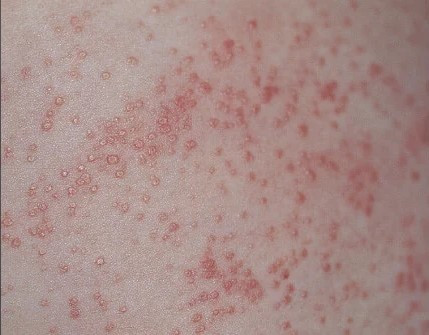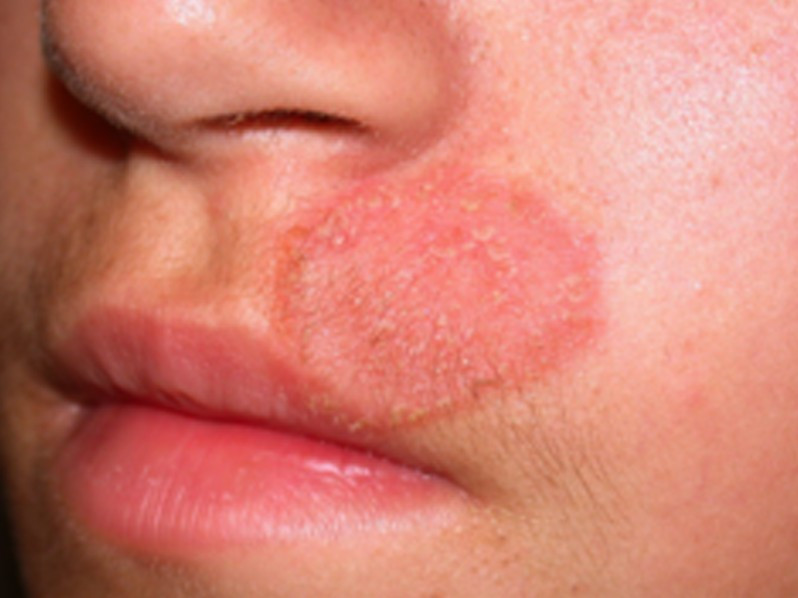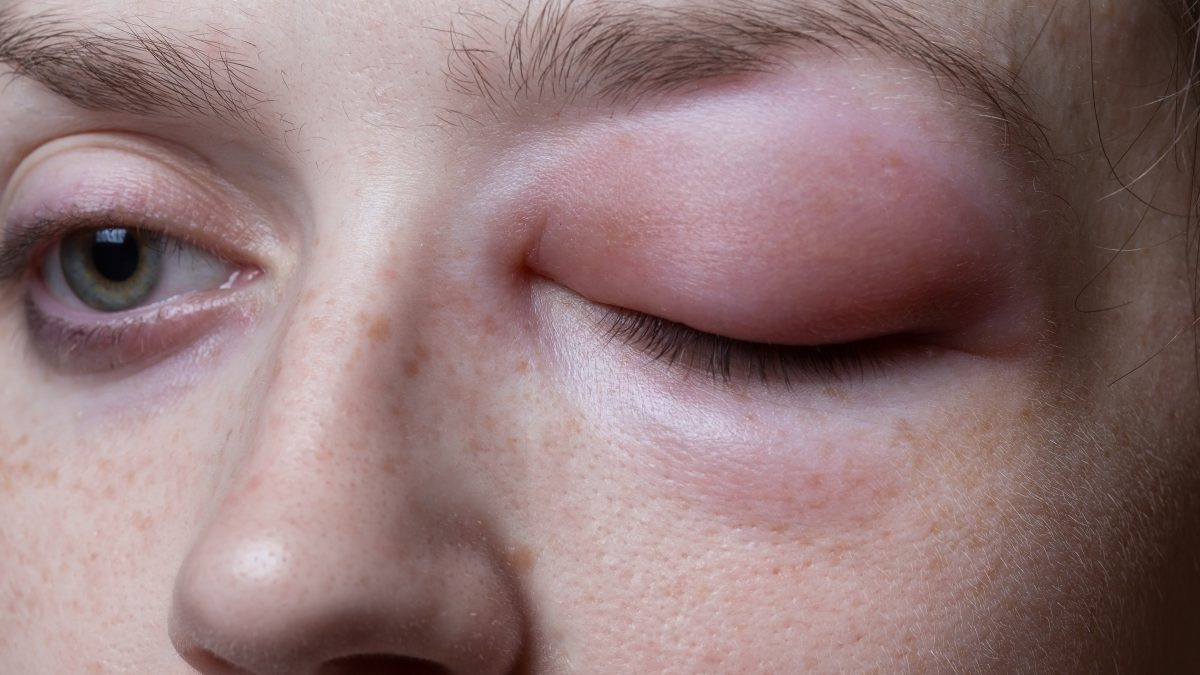Definition
Miliaria is a condition where a rash appears on the skin due to inflammation or blockage of the eccrine sweat ducts in the skin. Miliaria is also known as heat rash, prickly heat, or sweat rash. The skin rash that occurs in miliaria is not dangerous but can cause itchiness. Miliaria usually causes small red papules in places where sweat collects, such as the armpits, back, under the breasts, chest, groin, elbow creases, knee creases, and waist. Miliaria generally occurs when the body sweats more than usual, and can be found more often during the summer or in hot climates. This condition will usually improve once your skin gets cooler.
Miliaria is more common in babies, and is estimated to affect around 4% to 9% of newborns aged one to three weeks old. This condition is also experienced by almost 30% of adults who live in humid climates. Additionally, active people, newborns in incubators, and people having bed rest with fever are also more likely to get miliaria.
Based on the level of blockage that occurs in the sweat ducts, miliaria can be divided into three types, namely:
- Miliaria crystallina (sudamina) is caused by blockage of the eccrine sweat ducts near the surface of the skin in the epidermis layer (outer layer of the skin).
- Miliaria rubra is caused by blockage of the eccrine sweat ducts in the deeper layers of the skin (mid-epidermis).
- Miliaria profunda (tropical anhidrosis) is caused by sweat leaking and spreading from the sweat glands to the middle layers of the skin after repeated episodes of miliaria rubra.
Causes
Miliaria is caused by blocked eccrine sweat ducts, causing sweat that should evaporate to be trapped under the skin. This mechanism is what causes inflammation and the appearance of rashes on the skin. The exact cause of blocked sweat ducts is not always clear, but some of them are as follow:
- Sweat ducts that are not yet fully formed. The sweat ducts in newborn babies are not fully developed so they can break more easily and cause sweat to be trapped under the skin. Miliaria can occur in the first week of life, especially if the baby is warmed in an incubator, dressed too warmly, or has a fever.
- Tropical climate. Hot and humid weather can cause heat rash.
- Physical activity. Intense exercise or any activity that causes you to sweat a lot could lead to miliaria.
- Too hot, dressing too warmly or sleeping under a really thick blanket for example, can cause miliaria.
- Prolonged bed rest. Miliaria can also occur in people who lie in bed for a long time, especially if their rest are accompanied with fever.
- Use of cream or lotion in some cases could clog sweat ducts.
- Side effects of medicine, such as from the use of Clonidine, Bethanechol, and Neostigmine.
- Anatomical structure of the body. Skin folds in the neck, armpits, or groin for example, have skin that touches adjacent skin, potentially making it difficult for air circulation, and preventing sweat from evaporating properly.
Risk factor
Some factors that may increase your risk of miliaria include:
- Age. Newborn babies are most susceptible to miliaria.
- Tropical climate. People who live in tropical zones are much more likely to experience miliaria.
- Any physical activity that makes you sweat a lot, especially if you're not wearing clothes that allow the sweat to evaporate, has the potential to trigger miliaria.
- People with obesity tend to have more skin areas that can overlap with each other (due to fat deposits) which results in decreased air circulation of the skin so that there is a greater risk of miliaria.
- Have certain health problems that may increase the risk of heat rash, including:
- Morvan syndrome, a rare genetic disorder that causes excessive sweating.
- Pseudohypoaldosteronism type I, a condition that causes loss of sodium through the sweat glands which has some links to miliaria.
Symptoms
Miliaria usually shows up in minutes to hours after you start sweating. Symptoms of miliaria can include:
- The rash looks like a cluster of small red papules with the size of 1-2 mm, similar to small pimples.
- The skin under the papule is reddish or purplish.
- A “stinging” or prickling sensation.
- Itchiness that could be worse if you sweat.
- Swelling around the rash.
- Mild pain or burning sensation.
Miliaria can develop anywhere on your body, but most often the rashes appear in skin folds where the skin touches. Miliaria can also form in areas where your clothing sits on your skin for a long time, such as the waistband of your pants. Miliaria rarely form on the face. The most common locations of miliaria include:
- Arms and legs
- Neck
- Back
- Armpits
- Groin
- Under the breasts
- Inner thighs
Diagnosis
In diagnosing miliaria, the doctor will start by conducting a medical anamnesis. The doctor will ask the symptoms you are experiencing, when the symptoms appeared, the location of the rashes, and they will also look for risk factors that may play a role in the emergence of miliaria in you.
Next, the doctor will perform a physical examination by inspecting the affected skin area directly. In cases of miliaria that occur in people with dark skin, the doctor may perform dermoscopy to help in identifying the rash. Dermoscopy is a procedure using a small microscope that can magnify the appearance of the skin rash. On dark skin, heat rash usually appears white with darker edges. In general, to establish a diagnosis of miliaria, no special diagnostic tests are needed, and it is sufficient to establish the diagnosis on the clinical appearance of the rash.
Management
Miliaria usually go away on its own in about 24 hours. No need for special medication or therapy. To relieve this condition, you could go to a cooler place with less humidity, and remove clothing and other items that may increase sweat production. Some other steps you can take include:
- Wear light, loose cotton clothing.
- When exercising, choose a cool place or cooler time of day.
- Use a fan or air conditioner to lower body temperature.
- Avoid irritant chemicals that may worsen symptoms, such as the use of some synthetic ingredients.
- Apply a cold compress to the rash, you can use a damp cloth or ice pack wrapped in a towel, for 20 minutes.
- Drink plenty of fluids, preferably water, to prevent dehydration.
- If the rash itches, tap or pat the rash but don't scratch it.
If the above methods have not reduced the symptoms, the doctor would usually prescribe medications, such as:
- Topical medications, such as calamine, menthol, and camphor-based creams or ointments that could help relieve itchiness.
- Steroid cream that can reduce itchiness and inflammation in people aged over 10 years.
Complications
Miliaria usually heals without causing complications. However, in some cases, miliaria could cause bacterial skin infections characterized by the formation of inflamed and itchy pustules (pus-filled nodules).
Prevention
You can prevent miliaria from occurring by:
- Wearing light clothing and clothes that do not cause friction on your skin.
- Wearing clothes made of cotton and avoiding synthetic fabrics.
- Staying in an environment with good airflow or using an air conditioner if it's hot.
- Keeping the body cool and dry.
- Staying hydrated and drink lots of water.
- Avoiding excessive activities in very hot or humid temperatures.
When to see a doctor?
Miliaria can usually heal by cooling the skin and avoiding exposure to the heat that caused it. Consult a doctor if you or your child have symptoms that last longer than a few days, a skin rash that seems to worsen, or you notice signs of infection, such as:
- Increased pain, swelling, redness, or warmth around the affected area
- Pus discharge from the rash
- Swollen lymph nodes in the armpits, neck, or groin
- Fever or chills
Looking for more information about other diseases? Click here!
- dr Anita Larasati Priyono
Felman, Adam. The Full Lowdown on Heat Rash. (2021). Retrieved 01 May 2022, from https://www.healthline.com/health/heat-rash-pictures-remedies
Heat Rash. (2020). Retrieved 01 May 2022, from https://www.mayoclinic.org/diseases-conditions/heat-rash/symptoms-causes/syc-20373276
Heat Rash. (2021). Retrieved 01 May 2022, from https://www.healthdirect.gov.au/heat-rash
Heat Rash/Prickly Heat. (2021). Retrieved 01 May 2022, from https://my.clevelandclinic.org/health/diseases/22440-heat-rashprickly-heat
Jaliman, Debra. What Is Heat Rash?. (2022). Retrieved 01 May 2022, from https://www.webmd.com/skin-problems-and-treatments/understanding-heat-rash-basics
Kraft, Sy. What Is Heat Rash, and How Do We Treat It?. (2020). Retrieved 01 May 2022, from https://www.medicalnewstoday.com/articles/181512
Oakley, Amanda. Miliaria. (2020). Retrieved 01 May 2022, from https://dermnetnz.org/topics/miliaria
Wedro, Benjamin. Heat Rash: Symptoms and Treatment. Retrieved 01 May 2022, from https://www.medicinenet.com/heat_rash/article.htm











